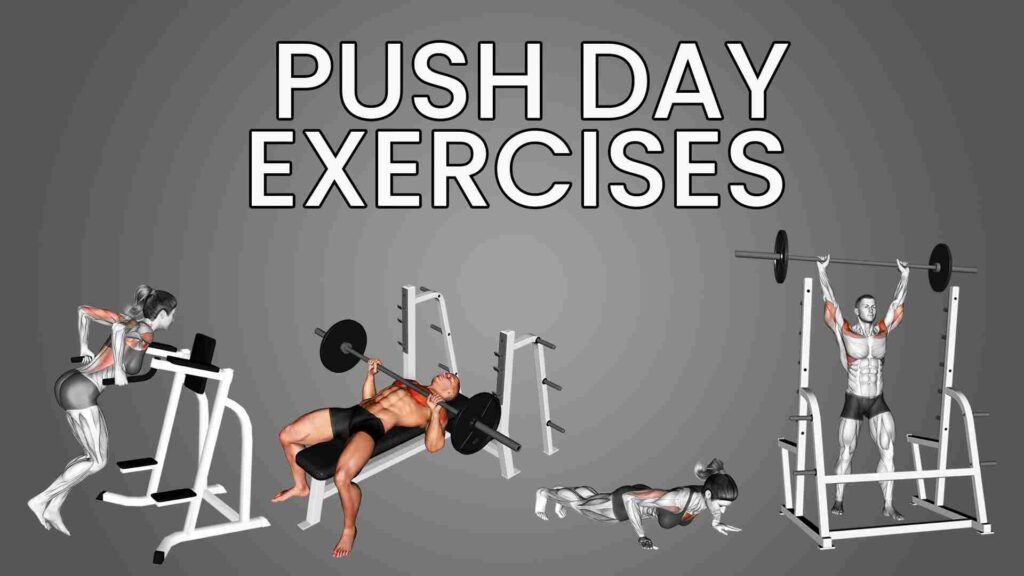Introduction
Are you ready to transform your back and arm strength, sculpting a physique that demands attention? The reverse grip lat pulldown, often overlooked by many in the gym, holds the key to achieving a powerful upper body. In this in-depth guide, we’re here to unravel the secrets of the reverse grip lat pulldown, equipping you with the knowledge and techniques needed to make it an integral part of your fitness journey. Whether you’re just starting or a seasoned lifter looking for tips to refine your form, this article will take you on a journey towards mastery.
What is the Reverse Grip Lat Pulldown?
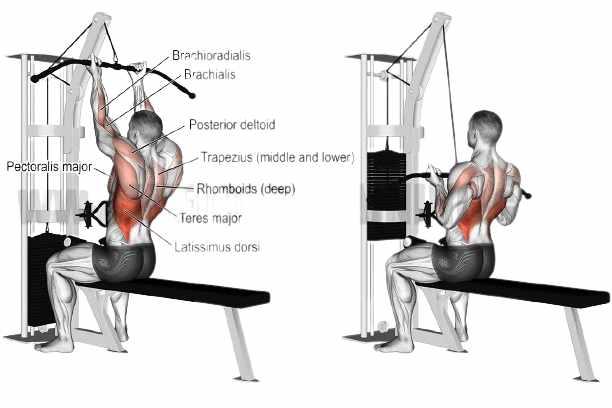
The Reverse Grip Lat Pulldown is a weight training exercise that primarily targets the muscles in the upper back, especially the latissimus dorsi (lats). It is a variation of the traditional Lat Pulldown exercise and is performed using a specific piece of gym equipment called a lat pulldown machine.
The Reverse Grip Lat Pulldown targets different muscle groups than the traditional overhand lat pulldown. While the standard lat pulldown primarily engages the upper portion of the lats and the shoulders, the reverse grip variation places more emphasis on the lower lats and the biceps. It also activates other muscles, such as the rhomboids, traps, and rear deltoids, contributing to a well-rounded upper-body workout.
SHOP FOR THE PULL-UP BAR ON AMAZON
This exercise is popular among fitness enthusiasts and bodybuilders because it helps build a V-shaped back, enhances arm strength, and improves overall upper-body muscle development. It can be a valuable addition to your workout routine if you want to diversify your training and target specific muscle groups effectively.
How to Perform the Reverse Grip Lat Pulldown Correctly?
Performing the Reverse Grip Lat Pulldown correctly is essential to maximize its benefits and minimize the risk of injury. Follow these step-by-step instructions to ensure proper form:
Equipment Setup:
- Start by adjusting the seat height on the lat pulldown machine, so your feet are flat on the floor, and your knees form a 90-degree angle.
- Choose a bar attachment with a reverse grip handle (palms facing you).
- Sit down on the machine and grip the bar with your hands positioned slightly wider than shoulder-width apart.
Execution:
- Sit down and position yourself securely in the seat with your back flat against the backrest. Your thighs should be snugly under the leg pads, and your feet flat on the ground.
- Grasp the bar with an underhand grip (palms facing you). Make sure your grip is secure, and your hands are evenly spaced on the bar.
- Keep your chest up, shoulders back, and maintain a neutral spine. This is your starting position.
- Inhale deeply, and as you exhale, engage your lats and biceps to pull the bar down towards your chest. Focus on pulling with your elbows, not your wrists.
- Continue pulling the bar down until it is just below your chin, and your elbows point towards the floor. This position allows for a full contraction of your lats and biceps.
- Hold the contraction for a moment, feeling the squeeze in your back muscles.
- Slowly and controlled, reverse the movement by extending your arms, returning the bar to the starting position.
- Inhale as you release the tension in your muscles.
- Repeat the movement for the desired number of repetitions.
Tips for Proper Form:
- Maintain a controlled pace throughout the exercise; avoid jerky or swinging movements.
- Focus on the mind-muscle connection, feeling the contraction in your lats and biceps with each repetition.
- Do not use momentum or excessively lean back during the pull; this can put strain on your lower back.
- Keep your elbows close to your body throughout the movement to engage your lats effectively.
- Start with a weight that allows you to perform the exercise with proper form and gradually increase the resistance as you become stronger.
Common Mistakes to Avoid:
- Using too much weight: Prioritize good form over heavy weights.
- Not fully extending the arms: Ensure you complete the full range of motion in both directions.
- Rounding the back: Maintain proper posture with your chest up and shoulders back.
- Using the wrists to pull: The focus should be on the elbows and back muscles, not the wrists.
- Jerky movements: Maintain a smooth, controlled motion throughout the exercise.
SHOP FOR THE RESISTANCE BAND ON AMAZON
Incorporate the Reverse Grip Lat Pulldown into your workout routine to strengthen your back, biceps, and improve your overall upper body strength. Always warm up before performing this exercise and consult with a fitness professional if you’re unsure about your form or the appropriate weight to use.
Benefits of the Reverse Grip Lat Pulldown
The reverse grip lat pulldown is a highly effective exercise that offers a multitude of benefits, making it a valuable addition to your workout routine. Here are some of the key advantages of incorporating this exercise:
- Develops a Stronger Upper Back: The reverse grip lat pulldown primarily targets the latissimus dorsi (lats), which are the large muscles of your upper back. By engaging these muscles, you can build a stronger and more well-defined back, which not only enhances your physique but also improves your posture.
- Balanced Muscle Engagement: Unlike the traditional overhand lat pulldown, the reverse grip variation places a greater emphasis on the lower portion of the lats and the biceps. This balanced muscle engagement helps create a more proportionate and sculpted upper body.
- Bicep Development: The underhand grip used in the reverse lat pulldown stimulates the biceps more than the traditional overhand grip. This additional bicep engagement not only strengthens your arms but also adds aesthetically pleasing definition.
- Improved Grip Strength: As you perform the exercise with an underhand grip, your forearm and grip strength are significantly challenged. Over time, this can lead to improved grip strength, which is beneficial for various other exercises and daily activities.
- Variety in Your Workout Routine: Adding the reverse grip lat pulldown to your workout regimen introduces variety and prevents workout monotony. It’s an excellent choice for breaking plateaus and keeping your workouts engaging.
- Enhanced Mind-Muscle Connection: This exercise requires a focused mind-muscle connection, which can improve your overall training experience. Concentrating on the muscles being worked helps you get the most out of each repetition.
- Injury Prevention and Posture Improvement: Strengthening the muscles in your upper back through the reverse grip lat pulldown can help prevent injuries and alleviate posture problems caused by weak back muscles. Good posture is not only vital for health but also contributes to a confident appearance.
- Versatile and Accessible: The reverse grip lat pulldown can be performed in most gyms that have a lat pulldown machine, making it accessible to a wide range of fitness enthusiasts.
SHOP FOR THE WORKOUT BENCH ON AMAZON
To maximize the benefits of the reverse grip lat pulldown, it’s essential to perform the exercise with proper form and progressively increase the weight and intensity as you become more experienced.
Variations and Alternatives
Variety is the spice of life, and it’s also crucial for a well-rounded fitness routine. While the reverse grip lat pulldown is an excellent exercise, it’s essential to diversify your workouts to continue challenging your muscles and avoid plateaus. Here are some variations and alternatives to the reverse grip lat pulldown to keep your back and arm workouts engaging and effective:
Variations:
- Close-Grip Reverse Lat Pulldown: This variation involves bringing your hands closer together on the bar, which places more emphasis on the lower lats and biceps. It can help increase bicep engagement while still targeting the back effectively.
- Wide-Grip Reverse Lat Pulldown: As the name suggests, this variation involves a wider hand placement on the bar. It emphasizes the upper portion of the lats and offers a different angle for back development.
- Reverse Grip Pull-Ups: If you prefer bodyweight exercises, reverse grip pull-ups are a great alternative. These can be challenging but are incredibly effective for targeting the lats and biceps. Use an assisted pull-up machine if needed.
- Kneeling Reverse Grip Lat Pulldown: Instead of sitting, kneel in front of the lat pulldown machine with your chest resting on a pad. This variation shifts the focus to your lower back and provides a unique angle of engagement.
- One-Arm Reverse Grip Lat Pulldown: Using a single-arm attachment on the lat pulldown machine, perform the exercise one arm at a time. This variation helps identify and correct strength imbalances between your left and right sides.
Alternatives:
1. Bent-Over Rows: This compound movement targets the entire back and works the lats, rhomboids, and lower back. It can be performed with a barbell, dumbbells, or a cable machine.
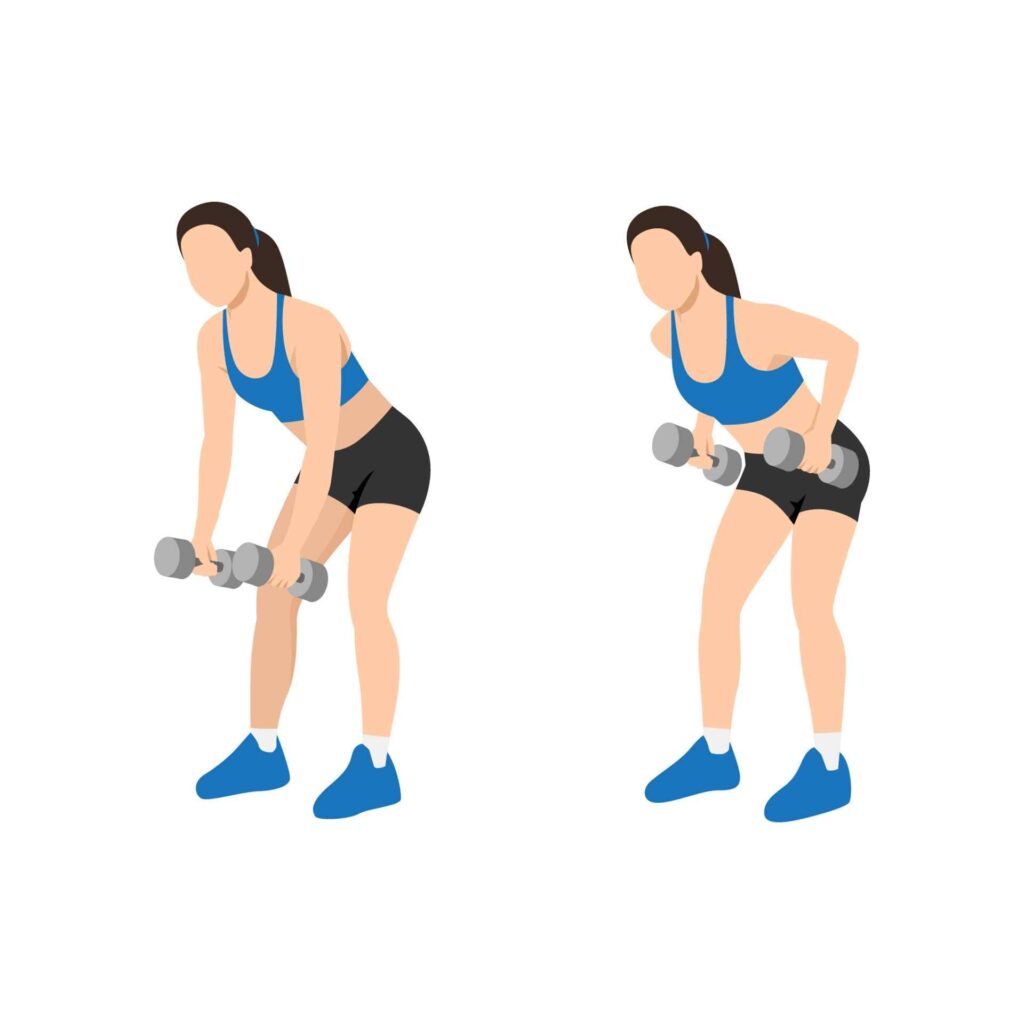
2. T-Bar Rows: T-bar rows are excellent for building overall back thickness and strength. They involve lifting a weighted barbell while bent over, which provides a different stimulus to your back muscles.
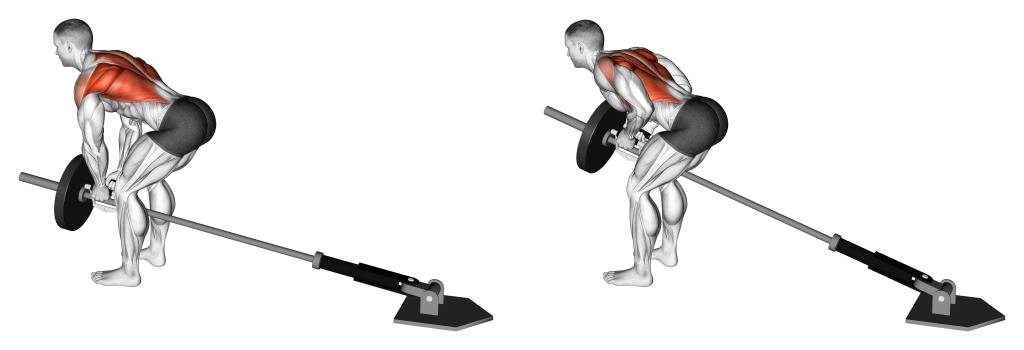
3. Chin-Ups: A chin-up, which involves a supinated (underhand) grip, is a fantastic alternative to the reverse grip lat pulldown. It’s a challenging bodyweight exercise primarily targeting the biceps and upper back.
4. Seated Cable Rows: Seated cable rows use a V-bar attachment and are great for working the mid-back and lats. It provides a unique angle of contraction and is easy to adjust for different fitness levels.
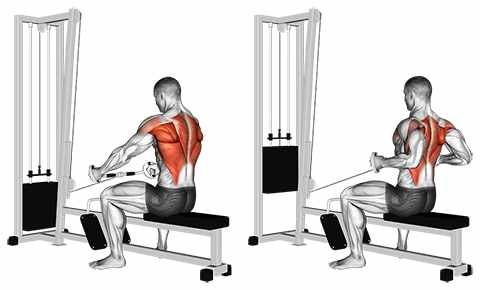
5. Face Pulls: Face pulls are an excellent exercise for targeting the rear deltoids, traps, and upper back. While they don’t replicate the lat engagement of the reverse grip lat pulldown, they are a valuable addition to your routine for overall back development.

Remember that the best variation or alternative for you depends on your specific fitness goals and preferences. It’s a good practice to periodically switch things up in your workout routine to challenge your muscles in new ways and avoid stagnation.
FAQs
Q 1. Is the reverse grip lat pulldown suitable for beginners?
Ans. Yes, the reverse grip lat pulldown is a beginner-friendly exercise. Start with a manageable weight and focus on mastering the form before progressing to heavier loads.
Q 2. What muscles does the reverse grip lat pulldown work?
Q 3. How does the reverse grip lat pulldown differ from the standard lat pulldown?
Ans. The primary difference is in the grip. In the reverse grip lat pulldown, you use an underhand grip (palms facing you), which places more emphasis on the biceps and lower lats, while the standard lat pulldown uses an overhand grip.
Q 4. What are the benefits of the reverse grip lat pulldown?
Ans. This exercise helps build a strong back, improves grip strength, and can contribute to better posture. It’s also an excellent way to target the biceps while working the back.
Q 5. How do I incorporate the reverse grip lat pulldown into my workout routine?
Ans. You can include the reverse grip lat pulldown in your back or upper body workout. Start with 3-4 sets of 8-12 reps and gradually increase the weight as you become more comfortable with the exercise.
Q 6. Are there any variations or alternatives to the reverse grip lat pulldown?
Ans. Yes, variations include using different attachments, like a close-grip handle or a wide-grip bar. Alternatives include chin-ups and pull-ups, which also work the same muscle groups.
Q 7. What should I avoid when doing the reverse grip lat pulldown?
Ans. Avoid using excessive weight that compromises your form. Ensure your back remains straight, and don’t pull the bar behind your neck, as it can strain your shoulders and neck.
Q 8. Is the reverse grip lat pulldown safe for people with lower back issues?
Ans. It can be safe if performed with proper form. However, if you have lower back issues, consult a fitness professional or a healthcare provider before including this exercise in your routine.
Q 9. Can women benefit from the reverse grip lat pulldown?
Ans. Absolutely! Women can benefit from this exercise as much as men. It helps in toning the back and arms and can contribute to overall strength and fitness.
Q 10. How often should I perform the reverse grip lat pulldown for optimal results?
Ans. You can include it in your workout routine 1-2 times a week, depending on your fitness goals and overall program.
Conclusion
In conclusion, the reverse grip lat pulldown is a powerful exercise that can be a game-changer in your fitness journey. Its unique approach, targeting the lats, biceps, and other muscles, makes it a valuable addition to your workout routine. With the right form, consistency, and a good understanding of its benefits, you can achieve remarkable results in terms of muscle strength, definition, and posture improvement.
Remember, safety should always be a priority, and it’s crucial to perform this exercise correctly to prevent injuries. If you’re new to the reverse grip lat pulldown, start with a manageable weight and gradually increase it as you become more comfortable and confident in your abilities.

Good day, and welcome to Fitthour. My name is Shubham Vijay, and I am a certified personal trainer and nutrition coach with 6 years of experience in the fitness industry. At Fitthour, we specialize in types of training, such as strength training, cardio, or HIIT, and our mission is to help clients achieve their fitness goals and improve their overall health.

